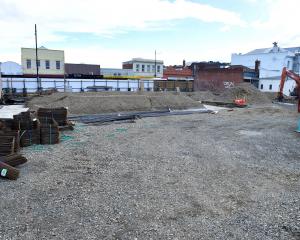An envelope approach was common in many developments, and brought advantages for both applicant and the environment, a civil engineer said yesterday.
Engineer Robin Dawson said the envelope approach TrustPower had undertaken in the Mahinerangi wind-farm proposal was fair and would enable the company to fine-tune its design.
Mr Dawson, giving evidence for TrustPower in the Environment Court in Dunedin yesterday, said the envelope approach gave the company the advantage of minimising effects.
TrustPower has a 1723ha site for its 200MW wind farm but has not defined the final locations of the turbines, or whether it would be using 2MW or 3MW machines.
The approach has been questioned by Judge Jeff Smith and the appellant, the Upland Landscape Protection Society.
The company has wanted an envelope approach as it gave it greater flexibility, and did not tie the company into buying a specific turbine.
Mr Dawson said in many projects he had worked on, including subdivisions, the envelope approach meant engineers could change road alignments, and reduce environmental effects.
Mr Dawson said further analysis since the Clutha District-Otago Regional Council hearing last year had led to the volume of earthworks being significantly changed.
His estimation of earthworks was 1 million cu m being moved, down from an initial estimate of 1.8 million cu m. There would be no earthworks in high-quality gullies, wetlands, springs, and peat bogs.
Society co-ordinator Ewan Carr said TrustPower's Deep Stream extension project had carried out earthworks well above what it had estimated, but Mr Dawson said he did not have a thorough knowledge of that project.
Mr Dawson said he was being conservative when estimating the earthworks, and if anything, volumes would reduce.
There was obviously a strong financial incentive for the company to have fewer earthworks.
Four fill sites would be dug for the disposal of material, which would cover 23ha, or 1.8% of the envelope site.
Built tracks would have a total length of 39.7km, with a maximum width of 12m.
The building of tracks would mostly be in pastoral areas, and in the most accessible areas. Schist rock, found in the area, would be a good base rock for roading.
Mr Carr queried whether the earthworks would stand up to a large rain event, but Mr Dawson said designs would meet national standards.
Ecologist Dr Ian Boothroyd said yesterday the fill programme would have no more than a minor impact on waterways.
TrustPower had avoided areas of high ecological values through down-sizing the envelope. There were no unique macro invertebrates in the area, and sedimentation of waterways would be minimised.











